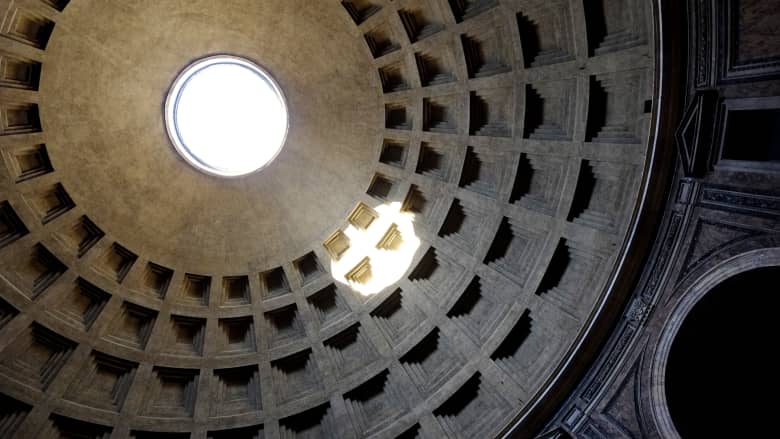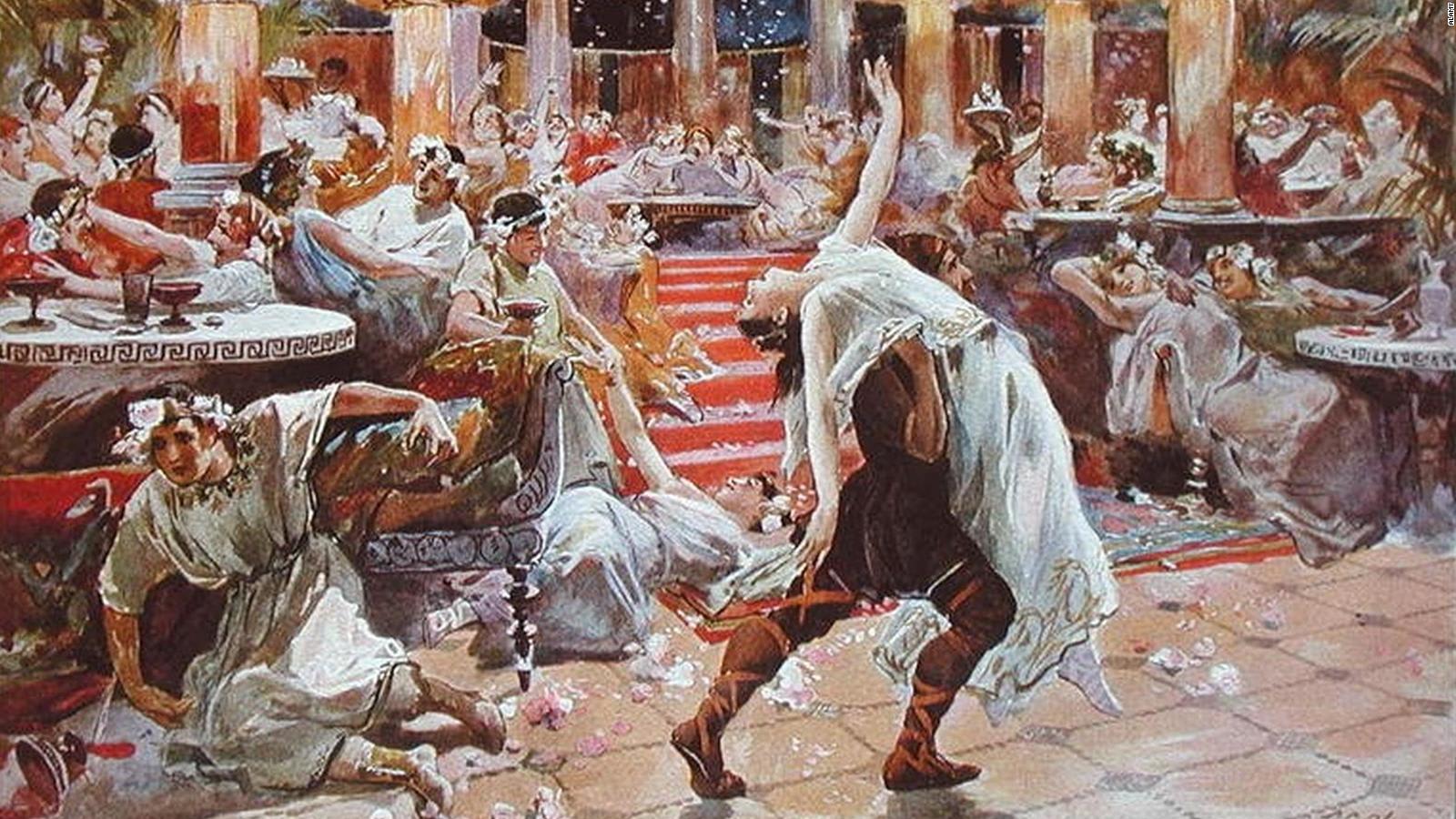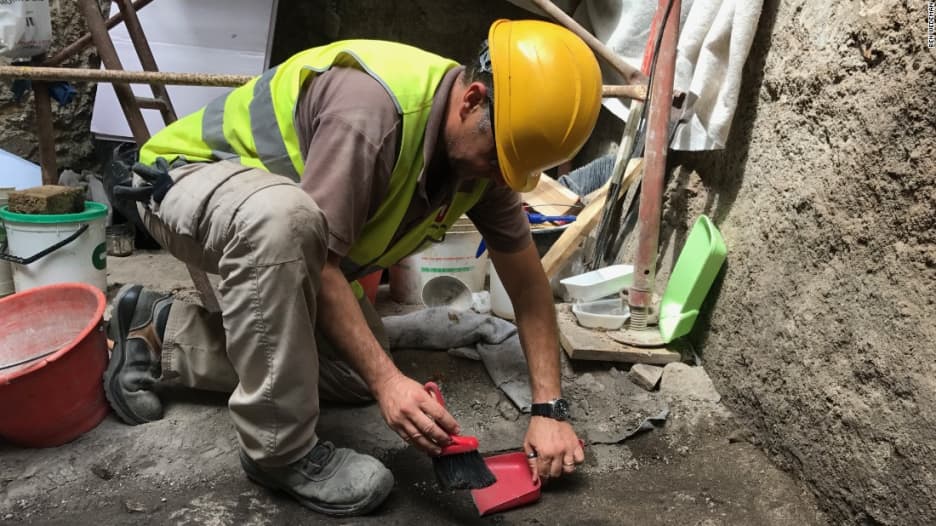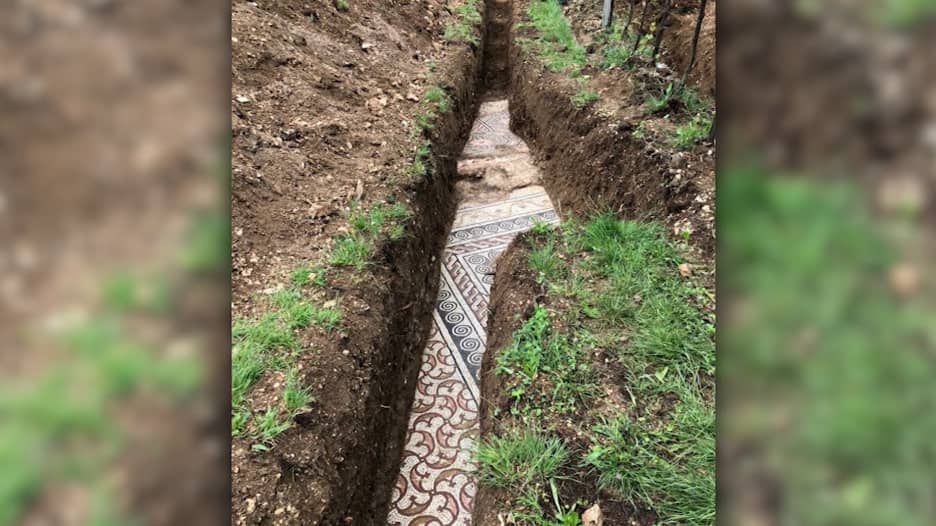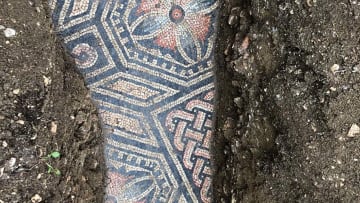دبي، الإمارات العربية المتحدة (CNN) -- في زمن الحضارة الرومانية، كانت استضافة الولائم الفاخرة التي تستمر لساعات طويلة بمثابة استعراض للثروة والمكانة في المجتمع الروماني.
وقال ألبيرتو جوري، أستاذ الفلسفة القديمة في جامعة فيرارا بإيطاليا: "تناول الطعام، كان يعد بمثابة احتفاءً بالحياة".
واستمتع الرومان القدماء بتناول شتى أصناف الطعام، الذي أعد بمكونات استُخدمت لصنع الأطباق الحلوة والمالحة أيضاَ، وعلى سبيل المثال، كانت معكرونة "لاجان" الريفية القصيرة والتي تقدم عادة مع الحمص، تستخدم أيضاً لصنع كعكة العسل مع جبن الريكوتا الطازجة.

أما عن البهارات، فكانت تُحضّر عن طريق ترك لحوم الأسماك والدم والأمعاء لتتخمر داخل أوعية، تحت أشعة شمس البحر الأبيض المتوسط.
وكانت لحوم الطرائد مثل لحم الغزال، والخنازير البرية، والأرانب جنباً إلى جنب مع المأكولات البحرية مثل المحار النيء، وسرطان البحر، عبارة عن بعض الأطعمة باهظة الثمن التي ظهرت بانتظام خلال الولائم الرومانية.
وقديماً، تنافس الرومان فيما بينهم على إستضافة ولائم طعام تقدم أطباقاً فريدة من نوعها، مثل طبق يخنة لسان الببغاء أو طبق لأحد أنواع القوارض.
واستعاد جورجيو فرانشيتي، مؤرخ الطعام وباحث التاريخ الروماني القديم، الوصفات المفقودة من هذه الوجبات، التي شاركها في كتابه بعنوان "تناول الطعام مع الرومان القدماء" مع، الباحثة والطاهية كريستينا كونتي.
وينظم الثنائي معاً تجارب تناول الطعام في المواقع الأثرية في إيطاليا والتي توفر لمحة للضيوف عن تجربة تناول الطعام مثل النبلاء الرومان.

ودعا سلوك الانغماس في تناول الطعام لساعات طويلة إلى ما يمكن اعتباره الآن سلوكاً اجتماعياً غير مرغوب فيه.
وأوضح فرانشتي: "كانت لديهم عادات غريبة لا تتوافق مع آداب المائدة الحديثة، مثل تناول الطعام أثناء الاستلقاء، والتقيؤ بين الوجبات".
ونظراً لأن الولائم كانت رمزاً للمكانة الاجتماعية واستمرت لساعات متأخرة من الليل، كان التقيؤ ممارسة شائعة مطلوبة لإفساح المجال في المعدة لمزيد من الطعام. وكان الرومان القدماء من أتباع المتعة والسعي وراء ملذات الحياة، وفقاً لما قاله جوري، مؤلف العديد من الكتب عن ثقافة الطهي في روما.
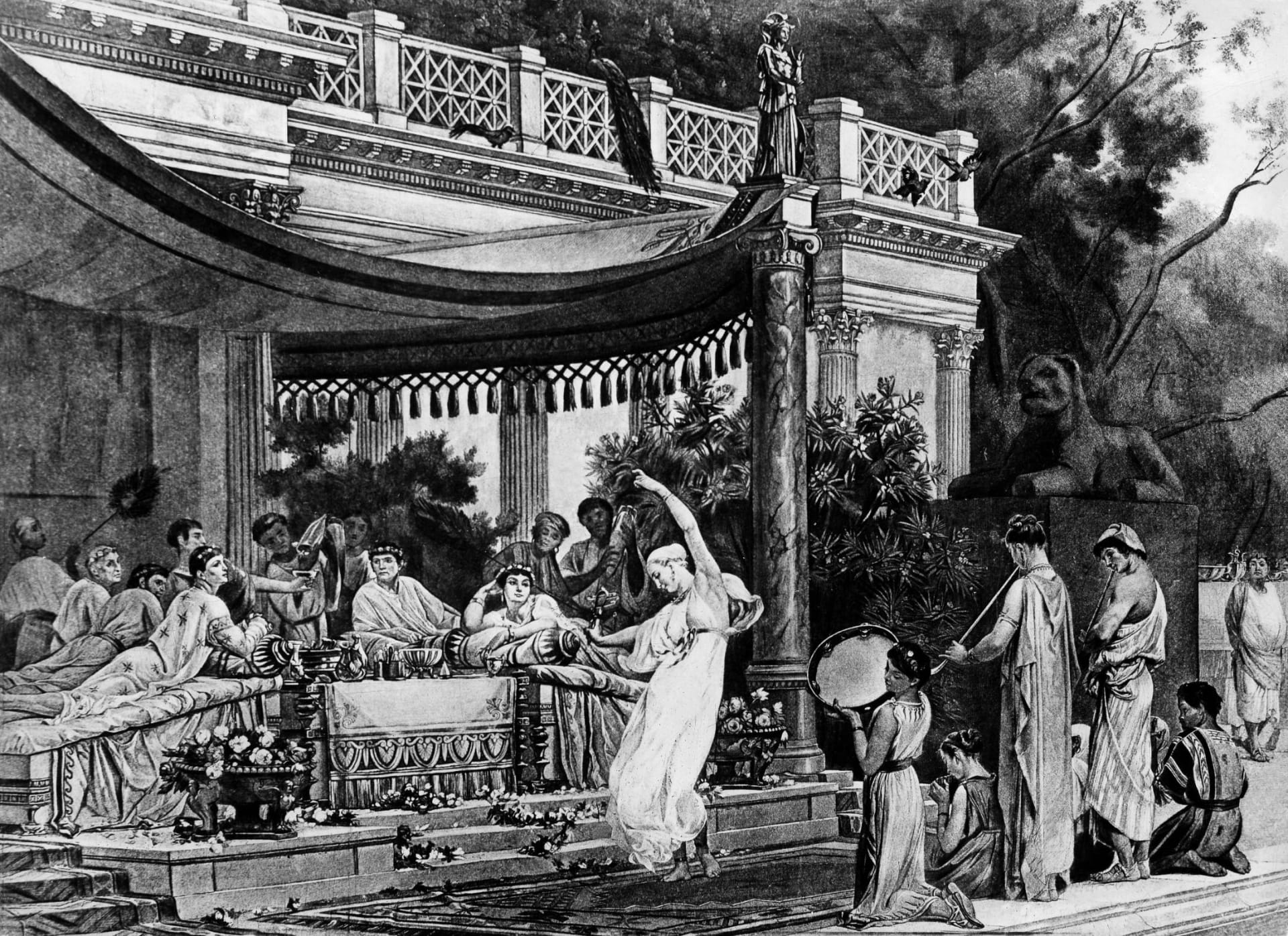
ومع كل ذلك الطعام، تفادى الرومان مشاكل الانتفاخ عن طريق تناول الطعام بوضعية الاستلقاء على أريكة مريحة ومبطنة، وكان يُعتقد أن هذه الوضعية الأفقية تساعد على الهضم، كما أنها كانت بمثابة تعبير عن مكانة النخبة.
كما سمح لضيوف الولائم بالاستلقاء في بعض الأحيان والاستمتاع بقيلولة سريعة بين الوجبات، مما يمنح معدتهم استراحة من الطعام.
وكان الاستلقاء أثناء تناول الطعام امتيازاً مخصصاً للرجال فقط، بينما كانت المرأة إما تتناول الطعام على مائدة أخرى، أو تجلس بوضعية جلوس على الركبتين أو بجانب زوجها، بينما يستمتع هو بوجباته.
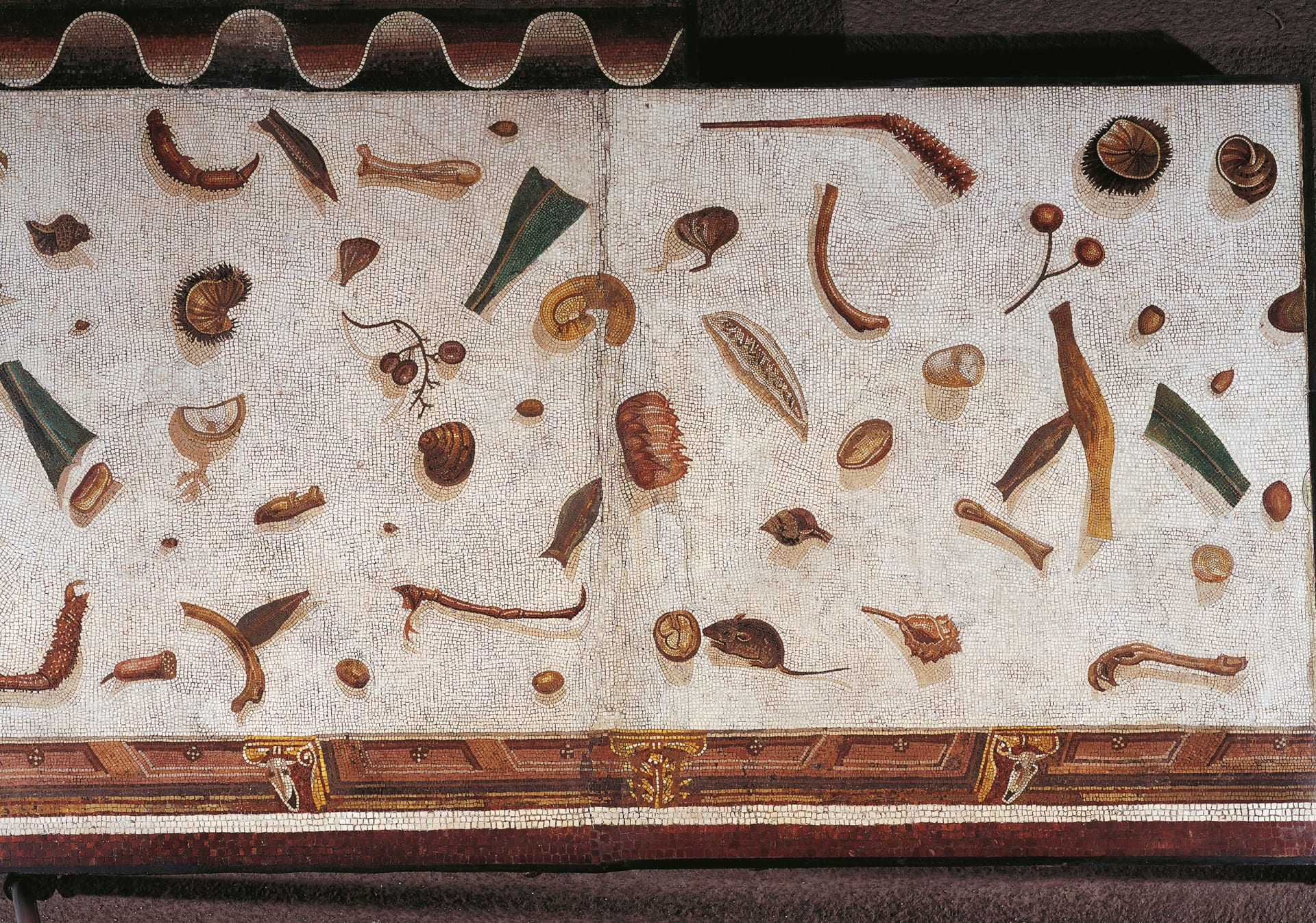
وكان الرومان أيضاً يؤمنون بالخرافات، إذ أشار فرانشتي إلى أن سقوط أي غرض من المائدة يعني أنه أصبح ينتمي إلى العالم الآخر، ولا يمكن استعادته خوفاً من أن يأتي الموتى سعياً للانتقام، بينما أن رش الملح كان نذير شؤم.
وكانت الولائم في زمن الرومان وسيلة لإبقاء الموت بعيداً، وفقاً لما قاله فرانشتي.
وتماشياً مع هذه النظرة إلى العالم، كانت أدوات المائدة، تتخذ شكل جماجم.
وبحسب ما قاله جوري، كان من المعتاد دعوة الموتى من الأحباء إلى المأدبة، وتقديم أطباق مليئة بالطعام لهم. وكانت التماثيل التي تجسد الموتى تشارك المائدة مع الأحياء.
